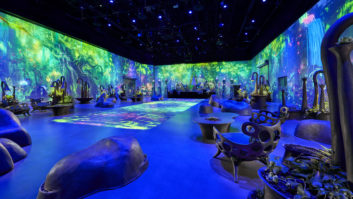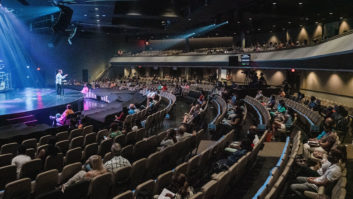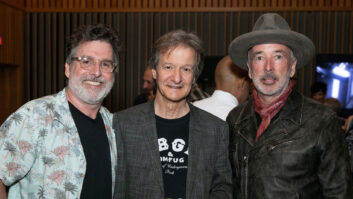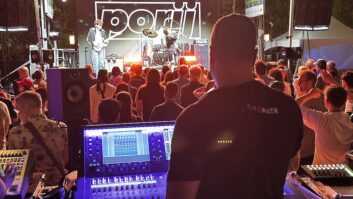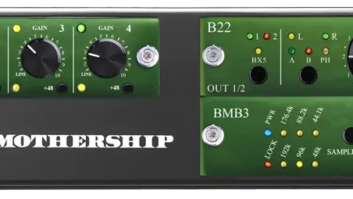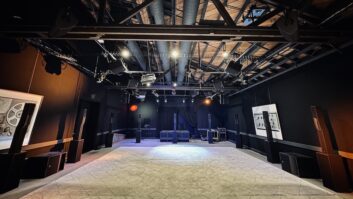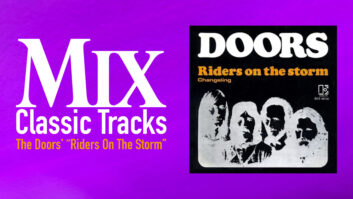
New York, NY (February 26, 2021)—In early 2020, houses of worship had various approaches to how they built community and what role technology played—or did not play—in that. Some created unique content to post on their websites, while others had a big focus on live broadcasts, and then there were HOWs that had no broadcast or streaming to speak of as part of their offerings. No matter the approach, though, the main focus for all seemed to be in-person services, as had been the tradition for years, if not centuries.
“Pre-pandemic, it sometimes seemed like being online just served to get people to come in the doors,” said Tim Corder, director of Strategic Accounts, House of Worship, Media and Entertainment, at integration company Diversified.
Things changed abruptly last spring, as they did across nearly all industries. With widespread bans on gatherings to help limit the spread of COVID-19, houses of worship had to quickly pivot to alternate ways of connecting with their congregations. Even those that were already working with broadcasts and livestreams found the switch to be jarring.
“The most significant challenge that has affected everything we do is that in March of 2020, churches by and large became broadcasters,” said Corder. “If you wanted to stay engaged with your congregation, you had to figure out how to essentially become a 24/7 broadcaster, looking for all the different ways you could engage your people—and not just adults, but students and kids, too.”
This has led to a noticeable change in what constitutes a service today, said Jeff Hawley, marketing director at Allen & Heath. “I’ve certainly seen the distinction between in-person, livestream and on-demand blur over the last year,” he explained. “As more churches now have multi-cam shoots as the norm to enable streaming, the ability to send that feed across campus to smaller socially-distanced breakout rooms or outdoor projection screens has allowed a safe and engaging remote extension of the in-person and in-the-main-sanctuary experience.”
Amidst these challenges, many a house of worship found a silver lining in the closures, embracing the opportunity to improve their systems while broadening their offerings. “A lot of our church end-users and clients were taking the time while buildings were closed to push the envelope when possible, but also to build and strategize, refresh and upgrade,” said Daniel Rivera, house of worship specialist at Meyer Sound.
Joshua Maichele, application manager, House of Worship, Americas at L-Acoustics agreed, saying he’s heard that many people found opportunities in the downtime. “For a lot of them, the minute the church was dark, they thought, ‘Well, gosh, we’ve never had an opportunity where we don’t have something happening in our room at least on Sunday, if not multiple times during the week. What a good time to do upgrades.'”
For many, that initially that meant sometimes significant upgrades to video systems, because they were expanding or initializing remote broadcast or streaming. “However, I saw a lot of audio upgrades as well, which is where we came in,” Maichele said. “We saw lots of people rushing to get audio upgrades done.”
Atlanta’s 12Stone Church is an example of a church that needed to rapidly address the challenges of in-person and streaming services. Serving about one-third capacity in person during the pandemic, 12Stone knew how important a good broadcast would be to reach the majority of its congregants, and undertook a quick audio upgrade this past summer.
“When we had to close down our campuses and push everything online, we had to reinvent how we do ministry,” said Taylor Davis, production director for the church. “We realized we wanted to build a space more conducive and focused on an intimate experience—one that breaks down the walls. [We also knew] once we could come together, we wanted to have the energy of the people gathered in the room. It’s a delicate balancing act every week.”
12Stone went with a Meyer Sound LEOPARD-based solution for the main worship auditorium at its Sugarloaf campus, where the renovation reconfigured a 900-capacity room to serve as a hybrid of live worship space and video production studio. “It’s hard to substitute physical gatherings in church with technology,” Rivera said, “but when it’s done really well and can bring people together, that’s a great tool.”

Positive Feedback Loop
Though providing connection is the top goal, inherent systems issues can impede a well-intentioned attempt. Tim Boot, director of Global Marketing at Meyer Sound, explains that one of the most important things manufacturers can do to help is much the same as the industry’s approach to physical installations—to focus on making technology as unobtrusive as possible.
“Broadcast allows us to expand reach to a much wider audience, but you can lose the intimacy that you have when you’re live,” he said. “We understand the reasons why, and latency is one of the big ones. As a company, we acknowledge that if we’re going to have more collaboration over distances, then we have to be very mindful of the fundamentals of human communication.”
Those involved in these systems at every step of the process, from manufacturing to installing to mixing and distributing, have spent the past year carefully addressing this issue. Smooth delivery, accurate intelligibility and music that sounds as good online as it does in person is one part; making that come together without the congregation realizing how it’s happening is another.
“When systems are implemented and managed correctly, the tools and technology fade into the background,” said Mark Coble, Audio/Acoustics Design and Commissioning at Paragon 360. “They become invisible, allowing the experience to take center stage. It can engage people in worship in a way that they may not be able to describe. Creating an atmosphere that is inviting and not distracting is key.”
It’s a tricky challenge, but one that recent technological developments have coincidentally been leading to helping with. Immersive audio—that amorphous concept of multi-dimensional sound—might be one approach to dealing with sonic challenges that socially distanced in-person services present.
“How do you create a connected feeling of community in worship with half or a third of the audience you’re used to having?” L-Acoustics’ Maichele noted. “I think that’s one of the reasons immersive audio is taking off as quickly as it is in churches right now.”
House of Worship Sound Moves Outside
As much as immersive audio might help with acoustic issues of smaller in-person gatherings, it’s also starting to play a role in streamed experiences, too, according to Diversified’s Corder. “Previously, it really only affected an in-person audience,” he said, “but the advancements that are coming are taking that immersive environment you’re creating live, and translating that to people’s experiences in headphones at home.”
That’s an important consideration as manufacturers and systems designers develop more ways to recreate the feeling of a live experience in a virtual space—and not doing so may create a negative feedback loop, Allen & Heath’s Jeff Hawley warns.
“I think the biggest danger we run into with the drastic increase in folks listening to spoken word on laptops and desktop computer speakers is the acceptance of ‘good enough’ audio,” Hawley said. “We’re driven to create the absolute best-sounding solution possible at each price and feature point, not to settle for something that is just ‘good enough.’ If we can’t collectively increase the average mix quality for streaming services and raise those expectations for remote congregants, then we might see a world down the road where what is necessary for in-person audio quality is much lower.”
Live and Streaming: Together Forever?
Congregations are slowly returning to in-person services, and that is likely only to increase as the vaccine rollout improves comfort with public gatherings—so what might that mean for the efforts houses of worship have put into producing broadcast and streaming services?

“While streaming has become the norm for church attendance, it cannot ever reproduce the totality of the in-person experience,” Hawley said. “Those houses of worship that can see the big picture and realize that it isn’t a binary in-person vs. streamed decision, but a new opportunity for ministry through the continuation of effective streaming, will certainly see huge benefits.”
That’s the overwhelming opinion of audio professionals who work in the HOW space. As Tim Corder at Diversified explained, a combination of in-person and streaming is now very likely the default. “We’ve crossed a point that I don’t think churches can or will choose to go back from, where a degree of online engagement is here to stay,” he said. “It’s hard to imagine we’ll ever go back.”
Since it’s probably not an option for a house of worship to put streaming on the backburner once in-person services return to pre-pandemic levels, there will need to be a change in where funding is allocated, L-Acoustics’ Joshua Maichele suggested: “A church can no longer say, ‘We don’t really care about the broadcast; we’re all about the in-person experience. I think this will change how a church budgets for AV. Even the smallest churches who never who had an AV budget now realize that there has to be something there, because they were all caught flat-footed when there was suddenly a need for an online presence.”
Tim Boot at Meyer Sound agreed, but added that this new requirement can lead to more creative solutions. “What we’re going to see coming out of this is that productions, including worship services, will permanently be in this hybrid of ‘made for live’ and ‘made for remote,’” he said, “where remote is not an afterthought, is not a representation of the live—it is its own experience.”
Allen & Heath • www.allen-heath.com
Diversified • www.diversifiedus.com
Focusrite Pro • pro.focusrite.com
L-Acoustics • www.l-acoustics.com
Meyer Sound • www.meyersound.com
